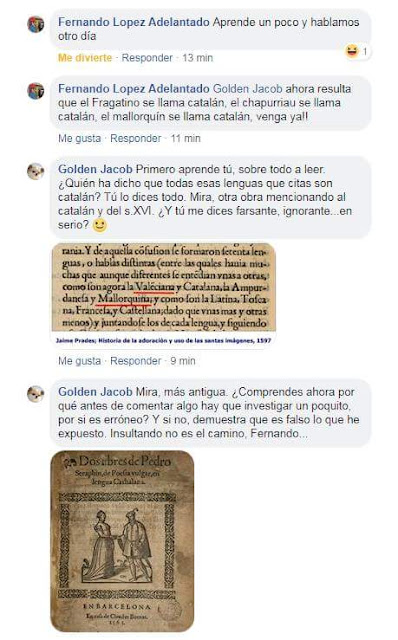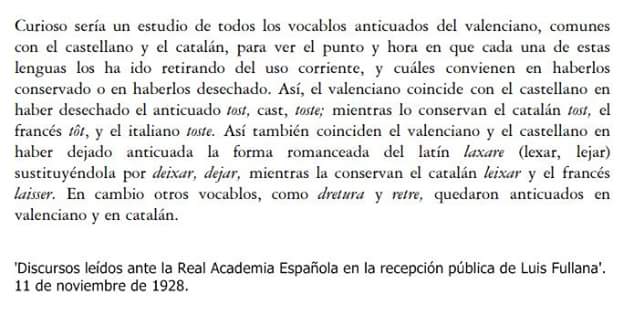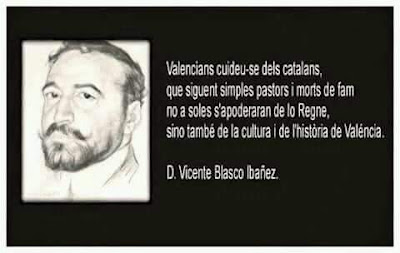https://journals.equinoxpub.com/index.php/SS/article/download/28912/27242

Language and conflict – Selected issues
Karol Janicki (2015)
London and New York: Palgrave and Macmillan. Pp. xiii + 228.
ISBN 978-1-137-38140-8
Reviewed by Beatriz Christino
Professor at the Department of Foreign Languages of the University of Bergen (Norway), where he has developed the research project ‘The language of peace and non-aggression’, author of Language misconceived – Arguing for applied cognitive sociolinguistics (2006) and Confusing discourse (2010), Karol Janicki has produced an admirable work with his new book, Language and conflict – Selected issues (2015). Being a well-founded analysis also accessible to the general public (as well as undergraduate students), this volume tackles a central question of linguistic fields like pragmatics, sociolinguistics, and applied linguistics, addressing almost everyone’s experience: ‘What roles do language and communication play in conflicts?’ (p. x).
Defined by its author as devoted to ‘micro questions’ such as ‘how the use of certain words or grammatical constructions may allow us to manipulate people, how it may arouse emotions, or how it may lead to unintended confrontation’ (p. 5, italics as in the original), the book assumes an enlightening perspective of inquiry on language use. Furthermore, it establishes a dialogue not only with works written by influential linguists (e.g., Lakoff, Fillmore, and Hymes), but also with those produced by other scientists such as Leonard Mlodinow and those belonging to a long philosophical tradition, discussing positions of, among others, Plato, Spinoza, Locke, Schopenhauer, and Voltaire.
Its structure is, to a significant degree, responsible for this combination of a work most worthy of respect and a useful guide for whoever is interested in avoiding conflicts by enhancing his/her own linguistic awareness. Each of the volume’s eight chapters contains a real story (most of them experienced by the author himself) that works as a meaningful and tangible illustration of the key concepts, followed by a section entitled ‘Summary and practical advice’.
Readers searching for more information about specific issues can count on the ‘Suggestions for further reading’ which close each chapter. In addition to that, a two-page glossary (pp. 203–204) clarifies the terminology that may appear challenging to non-specialists.
The first chapter deals with the widespread misconception that words and their referents in the real world have a ‘natural’ connection. As the author demonstrates, it is crucial not to forget that ‘words activate concepts in the mind’ (p. 16) and that this operation inevitably leads to a different result for each individual since personal experiences diverge. Particularly evident in the very common borderline of non-typical cases and fuzzy situations – which encompass highly abstract concepts – this complex process receives attention throughout this book.
In fact, a main idea of this chapter (recurrently reaffirmed and complemented in the following ones) is that ‘When we differ and are not aware of it, things may easily go wrong. When we differ and are aware of it, and possibly discuss the differences, we are less likely to get involved in conflict’ (p. 16).
Describing more precisely the activation of concepts in the human mind corresponds to the topic of the second chapter. It shows us that ‘words evoke whole scenarios’ (p. 32) and explains that alternative framing makes us imagine and talk about the same thing in different ways. Furthermore, it characterizes various kinds of framing processes: for example, through metaphors such as categorization and binary opposition. The last one, centered on the contrast us vs. them (the enemy), often takes place in the political domain, being particularly conducive to conflict.
As far as framing effects are concerned, the author informs us that negation cannot suppress the images evoked by words (something which structures like ‘Don’t think about an elephant!’ confirm) and that hypothetical constructions, as well as questions, are indicative of frames. As the author warns us, many journalists and politicians adopt questions as a strategy to induce their interlocutors to the framing of a specific situation. Considering texts published in daily newspapers and magazines, Janicki exposes ‘the use of framing to instigate or perpetuate conflict in the public sphere’ (p. 36). Appropriately, this chapter includes the section ‘Framing for conflict – framing for peace’ .
The role of emotions in arising, sustaining, and worsening conflicts constitutes the subject of the third chapter. In order to develop this discussion, Janicki takes into account recent work in cognitive neuroscience, which yields a new understanding about the nature of emotions and their relation with our linguistic behavior and our judgements. He asserts that emotions, as a neurophysiological phenomenon, control our lives to a significant measure.
Also based on works in psychology, the author indicates that we react faster to negative stimuli, including negative words. Linking this chapter to the previous one, he observes that ‘when a situation is framed in terms of words evoking strong emotions, the framing effects may be twice as strong as when relatively emotion-neutral words are used’ (p. 64, italics as in the original). Thus, delaying our emotional reaction to words, even though particularly hard, becomes undoubtedly rewarding: this component of emotional intelligence assumes a preeminent role in preventing conflict, as Janicki highlights. Investigating how emotions interact with discourses that tend to provoke conflicts, the author mentions the relevance of the distinction between typical and non-typical insults. Furthermore, he devotes an entire section to scrutinizing hate speech and focusing on the impossibility of reaching an ultimate definition of it.
The fourth chapter, ‘Descriptions, inferences and evaluations – Different levels of abstraction and conflict’, alerts us to the fact that even descriptions (in spite of their ‘more concrete’ nature) may differ from speaker to speaker, due to the intricate relations between perception, memory, and language. Concerning inferences, we are reminded that those differences are ‘almost limitless’, representing a constant source of disagreement.
Janicki characterizes the processes involved in establishing inferences, such as the ‘illusion of cause’ (the tendency not only to associate two events, but also to identify one of them as the cause and the other one as its consequence). According to him, in particular the inferences pointing to a single reason might generate conflicts. In fact, Janicki shows that a strategy to escape from conflict is to distinguish clearly between descriptions, inferences, and evaluations. Even more abstract than inferences, the last ones might be especially dangerous for peaceful coexistence. Above all, we should be careful with evaluations containing the verb to be in their structure (e.g. He is arrogant, she is intelligent), since, as the author advises us, they create an illusion of stability and certainty in an unstable and constantly changing world. In this chapter, Janicki also discusses how highly abstract words can work as tools for conflict, on the one hand, or for peace, on the other.
Facing a major issue of our days, the fifth chapter discusses ‘Euphemisms, dysphemisms and political correctness’ and bears the quite suggestive subtitle ‘How we can get misdirected’. Janicki starts with a brief history of political correctness (henceforth PC), while the second section of this chapter presents various definitions for this concept, none of them ‘correct in some absolute sense’ (p. 109). Intrinsically connected with issues of language and conflict, PC encompasses the search for ways of speaking that promote social justice, as Janicki clarifies. With the intention to achieve an accurate picture of such a polemic topic, the author contrasts the arguments and the discursive strategies of the PC defenders and those of its opponents. Moreover, he provides us with a sample of expressions coined to replace the traditional ones, considered to be denigrating (e.g. ‘sanitation worker’ instead of ‘garbage man’) and reserves a section of the book to examine sexist language. Janicki views PC expressions as linked to shifts in the process of framing, thus arguing that their use may be conducive to changes in attitudes and prevent conflict. Analogously, he recommends abandoning words and expressions that reinforce stereotypes. Regarding euphemisms and dysphemisms, whose ‘use goes back to the beginnings of recorded history’ (p. 123), Janicki gives special attention to the adoption of euphemisms as a strategy of deception and/or manipulation. In his view, this procedure comes up frequently in the language of politics, which expressions such as ‘collateral damage’ (referring to people injured or killed during a military operation) or ‘enhanced investigation’ (instead of the clear-cut ‘torture’) make evident.
Undoubtedly, there are differences in the way people handle the situations of everyday life from the linguistic point of view. Exploring the nature of these differences, as well as the conflicts that they may cause, corresponds to the aim of the sixth chapter – ‘Communicative competence – how we may misinterpret other people’s linguistic behaviour’. As Janicki demonstrates, the concept of appropriateness – which depends on sociolinguistic rules – assumes particular relevance in this context. He informs us that these rules function as regulative guidelines and do not present any trace of a categorical nature. By consequence, there is a considerable range of variation and unpredictability in (socio)linguistic behaviour.
The author displays the rules governing our communicative competence in a continuum, with extremes occupied by idiosyncratic and semi-categorical rules.
Additionally, the author reveals that our lack of awareness of how our own communicative rules differ from those of our interlocutors gives rise to a multitude of misunderstandings and conflict situations. Another problematic feature that contributes to disagreements and unfriendly interactions is our incapacity to relativize: we tend to perceive our own way to behave linguistically as ‘the’ way to behave. This propensity is perfectly described by Janicki, who also delineates the relations between communicative competence and non-verbal behavior in a specific section, while considering the relations between communicative competence and inferences in another one.
The seventh chapter enables us to understand the frequent emergence of conflicts associated with the meaning of linguistic units. Most coherently, Janicki’s first step here coincides with the application of a principle formulated in the first chapter – not mixing words and things. Therefore, he is in no way playing with words when he states that ‘the word “meaning”, like any other word, has no ultimate meaning in itself. It only means something to us language users’ (p. 154, italics as in the original). In his effort to unveil which senses ‘meaning’ may have to us, Janicki differentiates the classical and the prototypical approaches to meaning. Evidently he rejects the former, since it postulates the meaning of a word as intrinsic to the linguistic unit itself, in a process that completely excludes the individual language user. He advises us that those who believe ‘in the one correct meaning of a word, […] tend to be dogmatic, inflexible, self-righteous, complacent and cantankerous’ (p. 161). On the contrary, the conscious option to conceive meaning in the prototypical way provides us with much more tolerance and flexibility, decreasing considerably the occurrence of conflict situations. In this chapter, Janicki considers also incomprehensible language, determining various reasons that lead speakers to produce unintelligible messages and emphasizing the deliberate use of intricate texts as a manipulative strategy. Moreover, the author clarifies that the attribution of meaning definitely represents a matter of power, given that ‘[t]he people who have power define what words mean’ (p. 171).
Throughout the book, Janicki proves that language use often causes and/or worsens conflicts. In the eighth chapter, he indicates how education could help to reverse this state of affairs. Since ‘beliefs rule our perception’ (p. 179) and our strongest beliefs accompany us from our childhood, the author states that education for peaceful coexistence, oriented by ‘peace linguistics’ (a concept characterized on pp. 187–188), should start during the very first years of schooling.
Going further, he verifies the considerable distance between this ideal and the reality of the educational systems in different countries (the United States, England, Scotland, Australia, Norway, and Poland), evaluating the role linguistics plays in each of them. As a result, he recognizes the need for a significant change, pointing out that ‘[w]e may assume that an awareness of linguistic phenomena other than variation will contribute to still further reduction of social friction’ and concluding that ‘linguistics deserves a place in the K-12 educational system’ (p. 185). He also stresses the linguists’ responsibility in enabling this transformation by establishing a fruitful dialogue with society.
In the concluding chapter, Janicki reinforces his refusal of dogmatism, affirming that his work ‘promotes one view of language and conflict’ and assuring that other perspectives, guided by different philosophical, theoretical, and methodological orientations, ‘could also be seen […] as valid and useful’ (p. 199)
Even though Janicki’s Language and conflict, due to its instructive approach, is especially recommendable as an introductory text for students in linguistics and communication, also scholars of linguistics and nonspecialists will certainly find it a valuable reading. Its attentive consideration of significant aspects involving language use and the appearance/avoidance of conflicts makes this work really compelling and thought-provoking.
(Received 21st October 2015; accepted 23rd October 2015)








